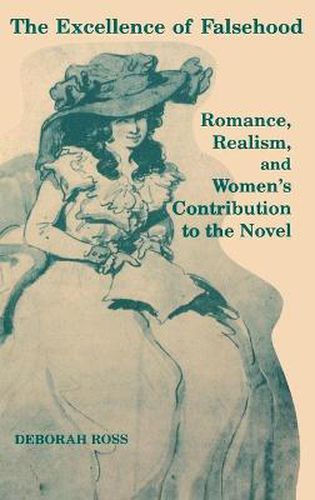Readings Newsletter
Become a Readings Member to make your shopping experience even easier.
Sign in or sign up for free!
You’re not far away from qualifying for FREE standard shipping within Australia
You’ve qualified for FREE standard shipping within Australia
The cart is loading…






The only excellence of falsehood… is its resemblance to truth, proclaims a clergyman in Charlotte Lennox’s The Female Quixote. He argues that romances are bad art; novels, he implies, are better. This clergyman’s remarks – repeating what literary and moral authorities had been saying since the late seventeenth century – are central to Deborah Ross’s discussion of romance characteristics in English women’s novels. Aphra Behn, Delariviere Manley, Eliza Haywood, Charlotte Lennox, Fanny Burney, Ann Radcliffe, and Jane Austen did not take the clergyman’s advice to heart. To them, the falsehood of romance was by no means self-evident, nor was the superior excellence of the novel. In theory, many of them accepted the distinction, but their works combined aspects of the romance and the novel in ways that brought them into conflict with the critical establishment. The texts discussed here illustrate a process of development both in the novel and in the conditions of women’s lives. Tensions between romance and realism enabled women writers to question official versions of reality and to measure life against a romance ideal. By altering readers’ perceptions and judgments, these authors gradually altered the reality that novels resemble and set up new combinations of romance and realism for future writers. This give-and-take between fiction and life is seen most dramatically in the way a romantic notion gradually comes to be treated in novels as both real and right. Ross follows one such notion – that women have matrimonial preferences – to the point where romance and reality merge. Ross’s study brings to light an important part of the history of the novel not yet incorporated in theories and histories of the genre.
$9.00 standard shipping within Australia
FREE standard shipping within Australia for orders over $100.00
Express & International shipping calculated at checkout
The only excellence of falsehood… is its resemblance to truth, proclaims a clergyman in Charlotte Lennox’s The Female Quixote. He argues that romances are bad art; novels, he implies, are better. This clergyman’s remarks – repeating what literary and moral authorities had been saying since the late seventeenth century – are central to Deborah Ross’s discussion of romance characteristics in English women’s novels. Aphra Behn, Delariviere Manley, Eliza Haywood, Charlotte Lennox, Fanny Burney, Ann Radcliffe, and Jane Austen did not take the clergyman’s advice to heart. To them, the falsehood of romance was by no means self-evident, nor was the superior excellence of the novel. In theory, many of them accepted the distinction, but their works combined aspects of the romance and the novel in ways that brought them into conflict with the critical establishment. The texts discussed here illustrate a process of development both in the novel and in the conditions of women’s lives. Tensions between romance and realism enabled women writers to question official versions of reality and to measure life against a romance ideal. By altering readers’ perceptions and judgments, these authors gradually altered the reality that novels resemble and set up new combinations of romance and realism for future writers. This give-and-take between fiction and life is seen most dramatically in the way a romantic notion gradually comes to be treated in novels as both real and right. Ross follows one such notion – that women have matrimonial preferences – to the point where romance and reality merge. Ross’s study brings to light an important part of the history of the novel not yet incorporated in theories and histories of the genre.